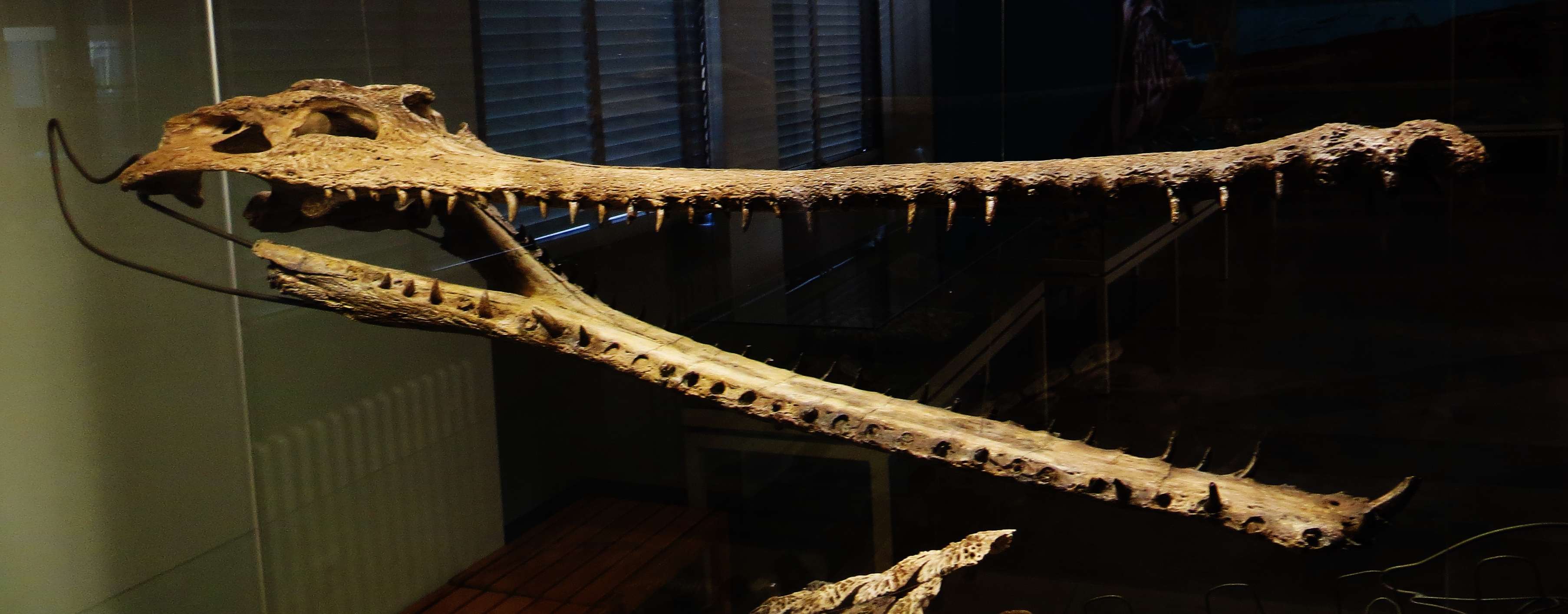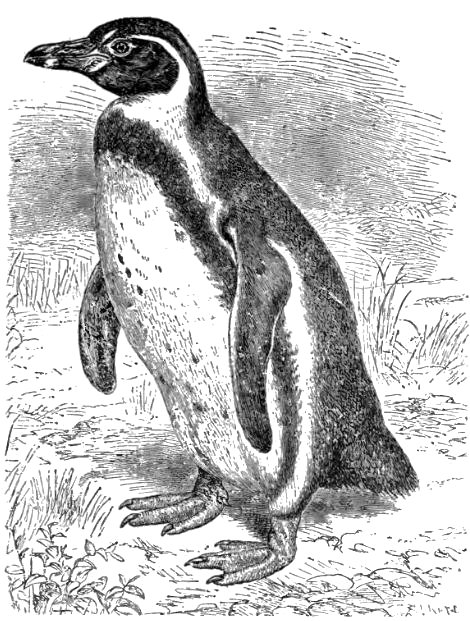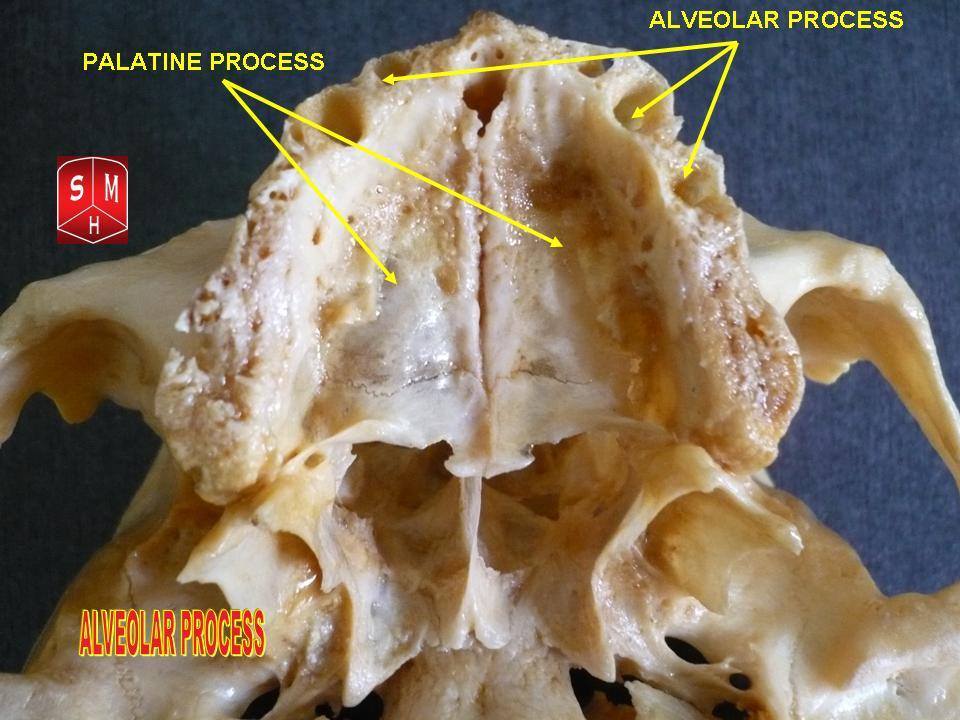|
Sacacosuchus
''Sacacosuchus'' is an extinct monospecific genus of marine gavialid that lived along the coast of the south-east Pacific from approximately 19 to 6.3 million years ago. Its fossils have been found in the Chilcatay Formation, Chilcatay and Pisco Formations of Peru, where it coexisted with the much larger ''Piscogavialis''. Based on its skull, ''Sacacosuchus'' was most likely a generalist feeder with an estimated total body length of . Its extinction is thought to have been caused by a combination of factors including falling sea levels and global cooling. History and naming ''Sacacosuchus'' is known from several adult to juvenile specimens mostly stemming from the Sacaco locality of the Pisco Formation. The holotype represents a nearly complete skull, while some of the referred specimens include partial skulls and dentary bones. Other material was found in the Ica-Pisco Valley and the older Chilcatay Formation. The generic name derives from the Sacaco area of the Pisco Basin and ... [...More Info...] [...Related Items...] OR: [Wikipedia] [Google] [Baidu] |
Piscogavialis
''Piscogavialis'' is an extinct monospecific genus of Gryposuchinae, gryposuchine Gavialidae, gavialid crocodylian. The only species yet known is ''P. jugaliperforatus''. Fossils of ''Piscogavialis'' have been found from the Miocene, Mio-Pliocene Pisco Formation of the Sacaco Basin in southern Peru in 1998 in paleontology, 1998,''Piscogavialis'' at Fossilworks.org where it coexisted with the much smaller gavialid ''Sacacosuchus''. ''Piscogavialis'' is known only from a single specimen, but it represents some of the best preserved gavialid material known from South America. The skull is preserved in three dimensions and is nearly complete. A mandible and some postcranial material have also been found in association with the skull. Several important features of the occiput, occipital regio ... [...More Info...] [...Related Items...] OR: [Wikipedia] [Google] [Baidu] |
Chilcatay Formation
The Chilcatay Formation is a geologic formation located in Peru. The formation was deposited in the Pisco Basin, during the Early Miocene, roughly from 19.2 to 18.0 Ma. Fossil remains of baleen whales, sharks, and rays Ray or RAY may refer to: Fish * Ray (fish), any cartilaginous fish of the superorder Batoidea * Ray (fish fin anatomy), the bony or horny spine on ray-finned fish Science and mathematics * Half-line (geometry) or ray, half of a line split at an ... have been found in the formation. Paleobiota of the Chilcatay Formation Mammals Dolphins Whales Seals Birds Penguins Reptiles Turtles Crocodilians Cartilaginous fish Rays Sharks References {{reflist Geologic formations of Peru Miocene Series of South America Neogene Peru Burdigalian Sandstone formations Siltstone formations Paleontology in Peru ... [...More Info...] [...Related Items...] OR: [Wikipedia] [Google] [Baidu] |
2022 In Archosaur Paleontology
This article records new taxa of fossil archosaurs of every kind Binomial nomenclature, described during the year 2022, as well as other significant discoveries and events related to paleontology of archosaurs that occurred in 2022. Pseudosuchians New pseudosuchian taxa General pseudosuchian research * A study on the mandible embryogenesis in extant caimans, and on its implications for the knowledge of the evolution of postdentary lower jaw of pseudosuchians, is published by Bona ''et al.'' (2022). * A study on the musculature of crocodylian and fossil suchian jaws, investigating the impact of the flattening of the skulls of suchians in their evolutionary history on their muscle anatomy, is published by Sellers ''et al.'' (2022). * Revision of ''Tsylmosuchus donensis'' and ''Scythosuchus basileus'' is published by Sennikov (2022), who interprets the latter taxon as a Synonym (taxonomy), junior synonym of the former one, and interprets ''T. donensis'' as a likely member o ... [...More Info...] [...Related Items...] OR: [Wikipedia] [Google] [Baidu] |
Pisco Formation
The Pisco Formation is a geologic formation located in Peru, on the southern coastal desert of Ica, Peru, Ica and Arequipa. The approximately thick formation was deposited in the Pisco Basin, spanning an age from the Miocene, Late Miocene up to the Early Pliocene, roughly from 9.6 to 4.5 Ma. The tuffaceous sandstones, diatomaceous siltstones, Conglomerate (geology), conglomerates and dolomite (rock), dolomites were deposited in a lagoonal to near-shore depositional environment, environment, in bays similar to other Pacific South American formations as the Caldera Basin, Bahía Inglesa and Coquimbo Formations of Chile. The Pisco Formation is considered one of the most important Lagerstätten,Brand et al., 2004Brand et al., 2011 based on the large amount of exceptionally preserved marine fossils, including sharks (most notably megalodon), penguins, whales, dolphins, birds, marine crocodiles and aquatic giant sloths. Famous fossils found in these layers include the giant raptorial s ... [...More Info...] [...Related Items...] OR: [Wikipedia] [Google] [Baidu] |
Miocene
The Miocene ( ) is the first epoch (geology), geological epoch of the Neogene Period and extends from about (Ma). The Miocene was named by Scottish geologist Charles Lyell; the name comes from the Greek words (', "less") and (', "new") and means "less recent" because it has 18% fewer modern marine invertebrates than the Pliocene has. The Miocene followed the Oligocene and preceded the Pliocene. As Earth went from the Oligocene through the Miocene and into the Pliocene, the climate slowly cooled towards a series of ice ages. The Miocene boundaries are not marked by distinct global events but by regionally defined transitions from the warmer Oligocene to the cooler Pliocene Epoch. During the Early Miocene, Afro-Arabia collided with Eurasia, severing the connection between the Mediterranean and Indian Oceans, and allowing the interchange of fauna between Eurasia and Africa, including the dispersal of proboscideans and Ape, hominoids into Eurasia. During the late Miocene, the conn ... [...More Info...] [...Related Items...] OR: [Wikipedia] [Google] [Baidu] |
Thoracosaurus
''Thoracosaurus'' (chest lizard) is an extinct genus of long-snouted eusuchian which existed during the Late Cretaceous and Early Paleocene in North America and Europe. Taxonomy ''Thoracosaurus'' had traditionally been thought to be related to the modern false gharial, largely because the nasal bones contact the premaxillae. Phylogenetic work starting in the 1990s instead supported affinities within Gavialoidea exclusive of such forms, although a 2018 tip dating study simultaneously using morphological, molecular (DNA sequencing), and stratigraphic (fossil age) data suggests that it might have been a non-crocodylian eusuchian. The genus contains the type species ''Thoracosaurus neocesariensis'' in North America, and what is either ''Thoracosaurus isorhynchus'' or ''Thoracosaurus macrorhynchus'' from Europe; a recent review argues that ''T. macrorhynchus'' is a junior synonym of ''T. isorhynchus,'' but it is unclear whether the type of ''T. isorhynchus'' allows differentia ... [...More Info...] [...Related Items...] OR: [Wikipedia] [Google] [Baidu] |
Nasal Bone
The nasal bones are two small oblong bones, varying in size and form in different individuals; they are placed side by side at the middle and upper part of the face and by their junction, form the bridge of the upper one third of the nose. Each has two surfaces and four borders. Structure There is heavy variation in the structure of the nasal bones, accounting for the differences in sizes and shapes of the nose seen across different people. Angles, shapes, and configurations of both the bone and cartilage are heavily varied between individuals. Broadly, most nasal bones can be categorized as "V-shaped" or "S-shaped" but these are not scientific or medical categorizations. When viewing anatomical drawings of these bones, consider that they are unlikely to be accurate for a majority of people. The two nasal bones are joined at the midline internasal suture and make up the bridge of the nose. Surfaces The ''outer surface'' is concavo-convex from above downward, convex from ... [...More Info...] [...Related Items...] OR: [Wikipedia] [Google] [Baidu] |
Dental Alveoli
Dental alveoli (singular ''alveolus'') are sockets in the jaws in which the roots of teeth are held in the alveolar process with the periodontal ligament. The lay term for dental alveoli is tooth sockets. A joint that connects the roots of the teeth and the alveolus is called a ''gomphosis'' (plural ''gomphoses''). Alveolar bone is the bone that surrounds the roots of the teeth forming bone sockets. In mammals, tooth sockets are found in the maxilla, the premaxilla, and the mandible. Etymology 1706, "a hollow", especially "the socket of a tooth", from Latin alveolus "a tray, trough, basin; bed of a small river; small hollow or cavity", diminutive of alvus "belly, stomach, paunch, bowels; hold of a ship", from PIE root *aulo- "hole, cavity" (source also of Greek aulos "flute, tube, pipe"; Serbo-Croatian, Polish, Russian ulica "street", originally "narrow opening"; Old Church Slavonic uliji, Lithuanian aulys "beehive" (hollow trunk), Armenian yli "pregnant"). The word was extended ... [...More Info...] [...Related Items...] OR: [Wikipedia] [Google] [Baidu] |
Prefrontal Bones
The prefrontal bone is a bone separating the lacrimal and frontal bones in many tetrapod skulls. It first evolved in the sarcopterygian clade Rhipidistia, which includes lungfish and the Tetrapodomorpha. The prefrontal is found in most modern and extinct lungfish, amphibians and reptiles. The prefrontal is lost in early mammaliaforms and so is not present in modern mammals either. In dinosaurs The prefrontal bone is a very small bone near the top of the skull, which is lost in many groups of coelurosaurian theropod dinosaurs and is completely absent in their modern descendants, the bird Birds are a group of warm-blooded vertebrates constituting the class (biology), class Aves (), characterised by feathers, toothless beaked jaws, the Oviparity, laying of Eggshell, hard-shelled eggs, a high Metabolism, metabolic rate, a fou ...s. Conversely, a well developed prefrontal is considered to be a primitive feature in dinosaurs. The prefrontal makes contact with several other ... [...More Info...] [...Related Items...] OR: [Wikipedia] [Google] [Baidu] |
Rostrum (anatomy)
Rostrum (from Latin ', meaning '':wikt:beak, beak'') is a term used in anatomy for several kinds of hard, beak-like structures projecting out from the head or mouth of an animal. Despite some visual similarity, many of these are Phylogenetics, phylogenetically unrelated structures in widely varying species. Invertebrates * In spiders, the rostrum is a part of the mouth of which it borders the opening in front. Homologous of an upper lip, this outgrowth is especially characterised by the presence of a pocket-shaped secreting organ, the rostral gland, only accessible by the sole means of histology and electron microscopy (external link "archentoflor"). * In crustaceans, the rostrum is the forward extension of the carapace in front of the eyes. It is generally a rigid structure, but can be connected by a hinged joint, as seen in Leptostraca. * Among insects, the rostrum is the name for the piercing insect mouthparts, mouthparts of the order Hemiptera as well as those of the snow s ... [...More Info...] [...Related Items...] OR: [Wikipedia] [Google] [Baidu] |
Frontal Bone
In the human skull, the frontal bone or sincipital bone is an unpaired bone which consists of two portions.'' Gray's Anatomy'' (1918) These are the vertically oriented squamous part, and the horizontally oriented orbital part, making up the bony part of the forehead, part of the bony orbital cavity holding the eye, and part of the bony part of the nose respectively. The name comes from the Latin word ''frons'' (meaning "forehead"). Structure The frontal bone is made up of two main parts. These are the squamous part, and the orbital part. The squamous part marks the vertical, flat, and also the biggest part, and the main region of the forehead. The orbital part is the horizontal and second biggest region of the frontal bone. It enters into the formation of the roofs of the orbital and nasal cavities. Sometimes a third part is included as the nasal part of the frontal bone, and sometimes this is included with the squamous part. The nasal part is between the brow ridges, ... [...More Info...] [...Related Items...] OR: [Wikipedia] [Google] [Baidu] |




